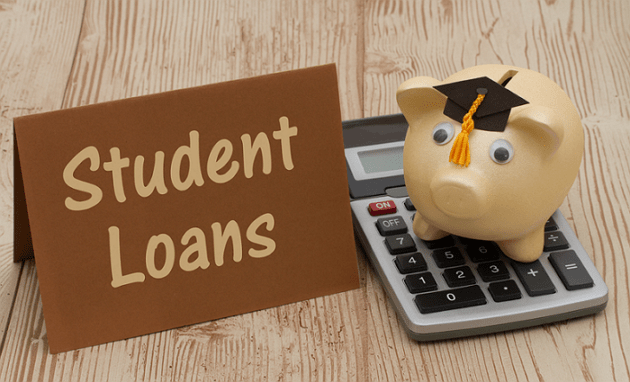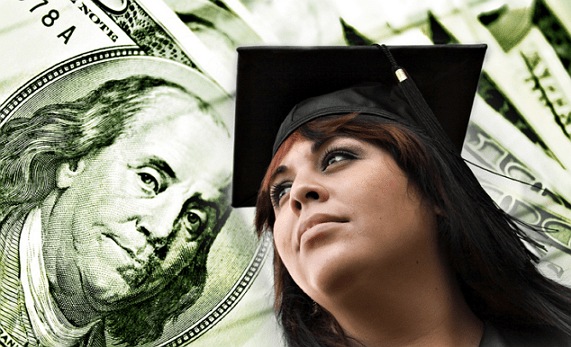Guide: Paying Off Student Loans (Repayment & Student Loan Forgiveness)
The average college graduate has $37,172 in student debt, so it is easy to see why paying off student loans is a massive problem for millions. This article will be your go-to guide for figuring out your student loan repayment.
Whether you are about to take out student loans, are about to pay on them, or are currently paying off student loans, we will go over common questions such as:
- What are my student loan repayment program options?
- Are federal student loan repayment options the same as private student loan repayment options?
- Is there really such a thing as student loan forgiveness? And how do you qualify?
- What are the top things to know before you pay student loans?
- Can my loan payment get lowered?
After reading this guide, you should be able to move forward with confidence in knowing how to best deal with your student loan payment each month.
See Also: Finding the Best Student Accounts | What You Should Know
Know the Federal Student Loan Repayment Plans
When it comes to federal student loan repayment, you are often assigned to a particular student loan repayment plan.
This is your plan for paying off your student loans by a designated date. Sometimes, by changing your student loan repayment program to a new plan, you can save money and/or shorten the time of your loan.



Student Loan Repayment
Your plan options can be viewed through the government’s student aid website. Here, you will be able to read an overview on each plan for federal student loan repayment. For each plan you can also find out:
- Eligible loans
- Monthly payments and time frames
- Personal eligibility
- All other requirements
Some of these plans for federal student loan repayment include “pay as you earn” options and income-based options. For all of them, however, utilize the website’s student loan repayment calculator to make sure you know the specifics of each option.
Government Student Loan Forgiveness Options
Arguably, the “easiest” way to pay off student loans is to not have to pay them back at all. This is where forgiveness steps in.
For those who need to pay federal student loans, you are fortunate enough to have a few student loan forgiveness options. Keep in mind that loan forgiveness is not available at all to those with private student loans.
Below are the three student loan forgiveness options that you could potentially qualify for:
- Public Service Loan Forgiveness
- Teacher Student Loan Forgiveness
- Perkins Loan Cancellation
Public Service Loan Forgiveness
One of the more common student loan forgiveness programs is the Public Service Loan Forgiveness (PSLF). This is forgiveness on any student loan under the William D. Ford Federal Direct Loan Program.
Graduates become eligible for this loan forgiveness under the following circumstances:
- You have made 120 qualifying monthly payments
- You are under a qualifying federal student loan repayment plan
- You are working under a qualifying employer
- You are working full-time
To learn more about what counts as “qualifying” monthly payments, repayment plans, employers, or full-time, check out the Federal Student Aid’s helpful website.
If you have met these qualifications, you can send in your Public Service Loan Forgiveness application. When you receive this forgiveness, you will not owe income tax on the amount that was forgiven.
Teacher Student Loan Forgiveness
While the Teacher Loan Forgiveness program is a popular method of student loan forgiveness, it does only apply to those who have gone into the teaching professions.
Graduates become eligible for this loan forgiveness under the following circumstances:
- You teach full-time for five “complete and consecutive years”
- You teach in particular elementary schools, secondary schools, or educational service agencies that “serve low-income families”
For a complete list of eligibility requirements, visit the Federal Student Aid’s website page on teacher qualifications.
This teacher student loan forgiveness program can forgive up to $17,500 (combined total) of the following student loans:
- Direct Subsidized Loans
- Direct Unsubsidized Loans
- Subsidized Federal Stafford Loans
- Unsubsidized Federal Stafford Loans
Don’t Miss: How to Get a Student Loan | Quick Guide to Get Money & Apply for Student Loans
Perkins Loan Cancellation
Another method of student loan forgiveness for teachers comes with the Perkins Loan Cancellation. This is only for those who received a loan from the Federal Perkins Loan Program.
Graduates become eligible for this loan forgiveness under the following circumstances:
- You are a full-time teacher
- You are teaching at a low-income school
- You are teaching in a qualifying subject area
For more information about what schools and/or subjects could qualify you for this beneficial option, see the Federal Student Aid’s website.
This particular federal loan forgiveness offering is a cancellation, meaning you could qualify for a full discharge of your loan. This is a 100% student loan forgiveness program.
Repaying Student Loans: Options For Other Professions
There are some student loan repayment options for those outside of the teaching profession as well:
- Nurse Corps Student Loan Repayment Program: This program for registered nurses can help nurses pay off 60% of their student loans. Read their website for eligibility requirements.
- SEMA Loan Forgiveness Program: The Specialty Equipment Market Association (SEMA) offers some people a student loan forgiveness incentive after they have worked with a SEMA-member-company.
- Volunteerism: Check into volunteer organizations, such as AmeriCorps or Peace Corps, who will sometimes offer a student loan repayment program.
Employer Student Loan Repayment
Another way to deal with student loan repayment is talking to your new employer about a loan payment. This is the only method of “loan forgiveness” available for those with private loans, though it could work for those who pay federal student loans, too.
According to Forbes, around 4% of companies are offering student loan payment benefits into their employment packages.
This is essentially student loan repayment assistance in which the employer offers to pay a certain chunk sum or percentage of your student loan payment upon hiring you. You can often find this in federal agencies or medical professions.
Or they may create a student loan repayment program that incentivizes you to stick with the company. For example, SoFi, a refinancing company, offers their employees a monthly $200 student loan payment.
Related: Key Reasons Not to Pay Off Your Student Loans Now
All-in-One Change Management Tools
Top Rated Toolkit for Change Managers.
Get Your Change Management Tool Today...
6 Ideas for Paying Off Student Loans Quickly
Outside of getting into the right student loan repayment program or taking advantage of any student loan forgiveness options that may be available to you, there are a few steps you can take to help you pay student loans as quickly as possible.
The following six tips are the ideas you need to know for paying off student loans. They will help you drop the worry and develop a positive action plan.
Many of these tips will be helpful for those with private student loans, since they do not readily benefit from things like student loan forgiveness or flexible student loan repayment plans.
1. Get An Auto Payment Interest Rate Deduction
While this trick may not apply to everyone, it is the simplest and easiest step for those who can take advantage of it. One way to slightly lower your student loan payment each month is to simply sign up for automatic billing.
Many financial institutions will take off 0.25% from your interest rate when you enroll for automatic billing. This is a double win for student loan repayment. Your money will go directly to your loan payment and you will save on interest costs.
2. Make More Payments
If you wait to follow your student loan repayment program, you will end up spending a considerable amount of money on interest payments. If you pay extra each month, or even pay two payments each month, you are greatly reducing the amount of interest you have to pay.
You will also limit the number of years you are stuck with a student loan payment. Spend less on other things in your early years so you can get rid of that debt, then you will have more money in your later years.
3. Pay Off High Interest or Variable Loans First
If you have only one student loan resulting in one student loan payment, ignore this step. For the rest of you, take an inventory of which student loans are costing you the most and then get rid of them.



Student Loan Forgiveness
Put all your extra money on your high interest or variable loans first. One less interest payment means one more principal loan payment, and that equals quick student loan repayment.
4. Avoid Consolidation
Consolidating puts all your loans into one and gives you the average interest rate. While this does bring down your higher interest rate loans into lower interest rates, it also does the opposite: your low interest rate loans are now locked in to a higher rate. Instead of taking advantage of the debt snowball method, you will have a higher interest rate for the duration of your student loan repayment.
Of course, each situation is unique. Talk to your financial advisor about consolidation and/or utilize FinAid’s student loan repayment calculator for consolidations to help you figure out how consolidating will affect your student loan payment.
5. Consider Loan Payment Refinancing
As much as loan consolidation may cost you more in the long run, refinancing your student loans can potentially save quite a bit. Refinancing means a private financial institution will pay student loans you already have and give you a brand new loan with a lower interest rate.
Of course, this is heavily credit based. If your credit is poor or bad, it will not necessarily be a great option for you. For everyone else, it can be a great way to expedite your student loan repayment by limit interest rates.
6. Meet with a Financial Advisor
Many people think of financial advisors as money gurus for older people. But when you are laying the financial foundation for the rest of your life, that is the best time to get help.
When it comes to student loan payment, it can be extremely beneficial to meet with an expert. You can also create a 5-year financial plan, which should include repaying student loans and even setting up a retirement plan.
At the very least, consult a student loan repayment calculator, like this one from Bankrate, to have a better idea of what you are looking at with your loan payment plan.
Popular Article: Best Private Student Loan Providers – Best Place for Student Loans
Repaying Student Loans: Your Next Steps
Now you have a better understanding of the following important topics:
- Your student loan repayment options (and when you pay federal student loans vs. private)
- Your forgiveness options
- Tips for paying off your student loans one student loan payment at a time
If you are just starting college, you can now choose the right student loan based upon your understanding of student loan repayment. If you are just starting to pay student loans, you now know all of the potential options to help you out. If you have been paying off student loans, try some of our tips or see if you are still eligible for any loan forgiveness.
Read More: Federal Student Loan Forgiveness | How to Get Rid of Your Federal Loan
- https://www.bigstockphoto.com/image-110522753/stock-photo-a-golden-piggy-bank-with-grad-cap%2C-card-and-calculator-on-wood-background
- https://www.bigstockphoto.com/image-7697610/stock-photo-one-hundred-dollar-bills
AdvisoryHQ (AHQ) Disclaimer:
Reasonable efforts have been made by AdvisoryHQ to present accurate information, however all info is presented without warranty. Review AdvisoryHQ’s Terms for details. Also review each firm’s site for the most updated data, rates and info.
Note: Firms and products, including the one(s) reviewed above, may be AdvisoryHQ's affiliates. Click to view AdvisoryHQ's advertiser disclosures.



